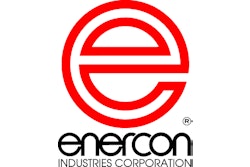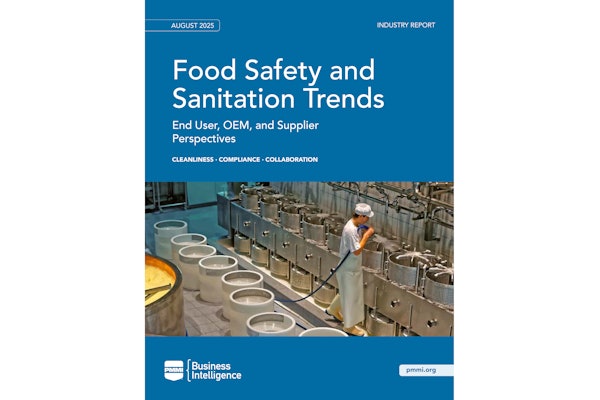One of only 41 members of a prestigious and selective association of family-owned bicentenary companies known as the Henokiens, Gekkeikan Sake Company, Ltd., Fushimi, Japan, has been brewing its country’s national alcoholic drink since 1637. In the 370-plus years since, the company has consistently embraced new technology to improve the quality and presentation of its sake. In Folsom, CA, the company’s U.S. facility continues this trend.
Situated on nine acres, Gekkeikan Sake (USA), Inc. is uniquely housed in several traditional Japanese-style buildings, surrounded by gardens and a Koi fish-stocked pond. The plant supplies product for the U.S., Canada, South America, and Europe. In May, the facility began operation of its third packaging line, a National Instrument (www.filamatic.com) Filamatic Cubitainer® filling and capping system. Says Gekkeikan vice president of production Bill Piper, the line was installed to handle growing demand for the company’s 18-L bag-in-box style container of sake for restaurant use.
According to Gekkeikan, it holds an approximate 25% share of the U.S. sake market, which averages nearly 13.5 million liters annually. Spurring the company’s U.S. growth since 1989 has been sake’s popularity as a common menu item in Japanese and other Asian restaurants. To supply these venues, Gekkeikan offers a bag-in-box solution called the Cubitainer from Hedwin Corp. (www.hedwin.com). The Cubitainer combines a flexible, heavy-duty Cube® Insert made from linear low-density polyethylene, placed inside a corrugated fiberboard overpack.
Until recently, Gekkeikan filled the Cubitainer on its second packaging line, which also accommodates a 3-L glass jug and a 1.8-L barrel. “It was getting to a point where the line was actually maxed-out in terms of what we could produce in a given day in the hours available to us,” explains Piper. “We needed to get equipment that was faster and at the same time, more efficient.”
High-speed, light-labor line
After observing the equipment in action at other packaging plants, Piper selected the Filamatic filler and capper, with custom modifications, as the centerpiece for Gekkeikan’s third packaging line. Among the features that appealed to Piper were the equipment’s ability to run at six containers/min—a speed two-times faster than the plant’s second bottling line—as well as its automation. “We are going to add a Best Flex (www.bestconveyors.com) conveyor to this system and, once it is attached, we will be able to operate the line with only two people, compared with the three needed on our second line,” Piper says.
The new filling line is being used to run one size of Cubitainer—the 5-gal, which Gekkeikan fills to 18 L—and one type of sake, its traditional variety, filled hot and served either warmed or chilled over ice. The Cubitainers are assembled offsite by Hedwin, which outsources their printing to Tharco (www.tharco.com). Piper relates that for Gekkeikan’s application, Hedwin modified the neck ring around the opening of the Cube Insert from a scalloped-edge design to a solid concentric circle to ensure proper handling and positioning through the line.
To ready a container for filling, operators manually pull the neck of the bag out from a hole in the bottom of the corrugated case. The Cubitainer is then turned downside up on the infeed conveyor, and the neck ring is positioned between two guide rails. From there, the conveyor indexes the container into the filling area, consisting of two filling nozzles, where sensors check for the container’s presence. Sensors also make sure that containers have not backed up from the capping area downstream.
During filling, a horizontal locator grasps the neck of the container, and the filling nozzle descends into its opening. Because of sake’s foamy properties when hot, Filamatic designed the machine’s filling nozzles for a bottom-up fill. The liquid is metered by servo-driven rotary positive displacement lobe pumps, which provide accuracy to ±0.5%. A valve-in-tip, no-drip suck-back nozzle removes any residual liquid or foam from the nozzle tip as it ascends from the container.
After it is filled, the container is transported to the capping area, consisting of two capping heads, where a gripper mechanism equipped with an air-operated gripping chuck presents, places, and tightens the cap. The 38-mm closures are presented to the capper using a custom-designed feeding system created to accommodate dual capping heads. Upon exiting the machine, the container passes under an Enercon (www.enerconind.com) Super Seal™ induction system that seals the cap’s foil liner to the bag opening.
Not yet installed at the time of Packaging World’s visit to the Folsom plant, but in operation as of presstime, a Digital Design (http://highresolutioninkjetprinters.com) ink-jet coding system is next on the line. It date-codes the container before it is unloaded manually from the conveyor and stacked along with other filled containers in a pyramid design on a pallet. Gekkeikan chose the high-resolution Digital Design Evolution I after successfully adding the equipment last May to its first bottling line, which handles glass bottles (see sidebar on page 41).
Once stacked on a pallet, the filled Cubitainer is left overnight to cool. The following day, operators check the pack for leaks and make sure the bag is pushed all the way back into the corrugated case. A dust cap and PVC tape are then used to cover the case opening, and the sake product is repalletized, ready for shipment.
Expansion through automation
Having served sake drinkers for more than three centuries, Gekkeikan certainly seems to have the recipe for longevity. One strategy at its U.S. facility has been its slow but steady growth through automation. According to Piper, the Folsom plant is just one-third of the way into its “ultimate buildout,” after more than 20 years at the site. Future expansion includes more than 14,000 sq ft of production space, an automated warehouse, and a fourth high-speed bottling line. In the meantime, the company’s new Filamatic Cubitainer filling and capping equipment has allowed the company to keep current with technology and meet its consumers’ desire for sake.
“We are expanding to keep ahead of the demand,” says Piper. “We can always rely on the home office if we need additional product, but we would rather take care of it here and be self-sufficient. So we are expanding based on our sales and on the forecast of future sales.
“Our growth has been very gradual. We have been very conservative in our expansion, but as we are expanding, we are automating. That way we can keep the number of personnel to a manageable number while reducing their workload.”




























